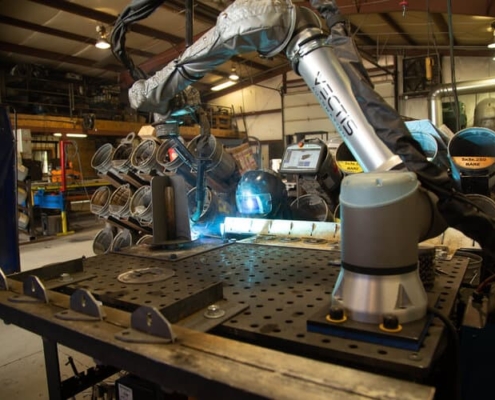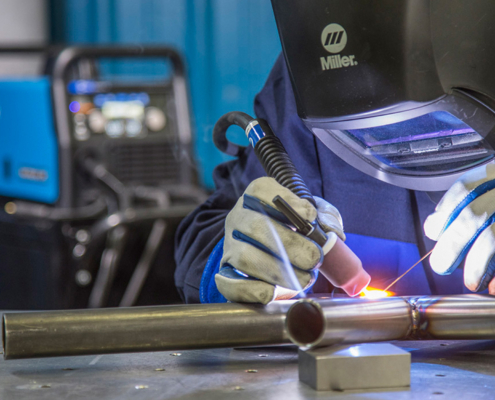 https://cksupply.com/wp-content/uploads/2023/06/VECTIS-17_edited.jpg
500
750
Nate Riggins
/wp-content/uploads/2023/04/CK-Supply-White-Logo.svg
Nate Riggins2021-02-22 19:44:142023-06-27 19:12:48Vectis Cobot Automation
https://cksupply.com/wp-content/uploads/2023/06/VECTIS-17_edited.jpg
500
750
Nate Riggins
/wp-content/uploads/2023/04/CK-Supply-White-Logo.svg
Nate Riggins2021-02-22 19:44:142023-06-27 19:12:48Vectis Cobot AutomationA little more than 2 yr. ago, the production team at Fleet Engineers, a division of Tramec Sloan in Muskegon, MI, had seen enough. Stamping parts for one of its biggest sellers—frames for mud flaps that go on heavy trucks and trailers—created a mess, as oil applied to the incoming coils of hot-rolled pickled-and-oiled (HRPO) steel drenched its stamping dies and led to huge and costly cleanup issues. Further, downstream welding operations on stamped parts (each assembly comprises nine parts, and measures 12 by 32 in.) experienced excessive weld spatter. Weld quality and appearance suffered, and welders wasted valuable production time cleaning off weld spatter.
“We had to do something to improve the process and to help our pressroom and weld shop become more productive,” says Mike Thorsby, director of supply chain management at Fleet Engineers. “We even had operators stationed at each press using rags to wipe excess oil from the material as it fed into the press. In addition, welders were spending a lot of time cleaning and grinding spatter off of the welds. Further, when we asked the material supplier to cut back on the oil, parts would rust when we sent them out for e-coating and powder coating. It was a vicious cycle.”
Dry-Film Lubricant to the Rescue
The Fleet Engineers division operates out of three manufacturing plants on its sprawling Muskegon campus. Plant one, its 185,000-sq.-ft. metal shop, is where we find the firm’s 16 stamping presses (110- to 600-ton capacities) and weld shop (seven weld cells), where mild and stainless steel, as well as aluminum stock, enter, and truck/trailer parts exit. The metal shop fabricates and assembles mud flaps and brackets, spare-tire carriers, side skirts and other truck and trailer accessories; Fleet also manufactures roll-up and swing doors.
Thorsby files the mud-flap bracket project under the firm’s catalog of continuous-improvement (CI) projects, “to make our products perform better in the field and to improve our processes,” he says, explaining CI initiative goals and objectives. The metal shop produces these brackets at very high volumes, running them for 1.5 shifts/day, 5 days/week. Hence the urgency, in 2017, to improve its stamping and welding efficiency. The solution: investing in the application of a dry-film lubricant (DFL) to each master coil of steel at Chemcoaters in Gary, IN.
“We take in Fleet Engineers’ master coils and run them through our line,” says Ted Jarosz, new product and technical service manager at Chemcoaters. technical sales manager at Chemcoaters. “The steel, 0.059 in. thick, is cleaned using two 30-ft. alkaline cleaning processes and two hot-water rinses. Then the stock runs through a GFG roll-coating line, which applies the DFL (called Chemform), and then finally to an infrared oven for curing.”
Coated coils route to a service center for slitting, then Fleet Engineers runs the slit coils through a blanking line, and press operators feed blanks into the firm’s presses. “We negotiate our steel buy 6 to 9 months out,” Thorsby says, “and have our supplier release the master coils directly to Chemcoaters for slitting and for application of the DFL. It then ships us 10,000 to 12,000-lb. slit coils two to three times/week.”
The Cost Justification Equation
Chemform, an acrylic lubricant with a coefficient of friction of 0.04 to 0.10, says Jarosz, is designed to reduce or eliminate metal-to-metal contact and avoid galling wear. While the process does add about 10 percent to Fleet’s material cost, Thorsby says the benefits far outweigh the additional expense.
“We’ve seen a significant reduction in tool maintenance,” he says. “We’ve also eliminated the use of drawing compound, the need to stage operators at the presses to wipe excess oil from the stock, and post-weld spatter cleanup. In addition, we’ve significantly reduced the time required in our quality department for weld inspection, and the associated costs from rejected parts and reworking.”
While the benefits have been great, Thorsby does note some adjustments made in the shop to accommodate the new DFL. “The lubricant is very slick,” he says. “To prevent the coils from telescoping, we’ve had to add extra strapping bands around the slit coils. And, rather than load blanks onto flat pallets for movement by forklift to the presses, we now stage the blanks on racks—to prevent the blank stacks from sliding off of the truck.”
Wait—There’s More
In addition to the DFL coating, Chemcoaters also offers a coating formulated and blended inhouse, called InterCoat ChemGuard, for use with galvanized substrate and incorporating metallic zinc. According to Jarosz, the coating has a coefficient of friction similar to that of wet lubricants during stamping. It also has a self-healing characteristic—once it becomes damaged, scratched or abraded in service it will still provide corrosion protection along the edges of a punched, sheared or cut edge.
When Jarosz presented the ChemGuard process to Thorsby late in 2018, he immediately thought of the perfect application for another Fleet Engineers product: fabricated tire-carrier assemblies, which are subjected to the harsh environment underneath each truck. Fleet Engineers also switched to the DFL for stamping these parts.
“Stamping these assemblies benefitted from switching to the DFL,” Thorsby says, “by minimizing tool wear and avoiding the need for press operators to sop up excess oil. Taking it one step further, Chemcoaters offers the ChemGuard coating with a few different tints (gray, black and blue) and the black fit right in with the tire carrier. We’re evaluating it with a galvanized sheet steel, replacing the HRPO material, and believe that the color-enhanced ChemGuard product will further enhance corrosion resistance and also eliminate the need for us to e-coat and powder-coat the assemblies. The savings may be significant.” MF
Article Credit: Brad Kuvin & Metal Forming Magazine
Link: https://www.metalformingmagazine.com/enterprise-zones/article/?/Lubrication/2019/8/23/Dry-Film_Lubricant_Leads_to_Aha_Moment
"*" indicates required fields




